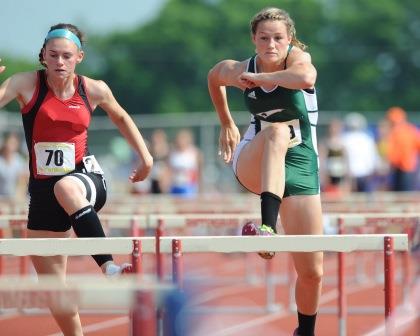Top 5 Mobility Stretches You Can Incorporate Right Now
Joint mobility is one of our foundations for training any athletes or non- athlete. Before we dive into what joint mobility is, we must define it. For strength and conditioning there is always confusion between joint mobility and flexibility. According to the NSCA (National Strength and Conditioning Association) Flexibility is a measure of range of motion and has a static (in place) and a dynamic (with movement) components. Static flexibility is the range of possible movement about a joint. Dynamic flexibility refers to the available range of motion during active movements and therefore requires voluntary muscular actions. Mobility, which is the movement about the joints. Mobility and flexibility work together during any warm up, today were going to look at the top 5 mobility exercises you can do right now.
- Ankle Mobility Stretch on the wall
- Kneeling Thoracic Spine Rotation
- Cook Squat
- Spider Stretch to Thoracic Rotation
- Knee Hug Drop Lunge to Rotation
- Ankle mobility Stretch on the Wall: Ankle mobility is important because this joint is the first thing we need to be flexible while moving. From sprinting to lunging the ankle is important to us. We need to have a flexible joint for proper movement in all planes to occur. If we have poor flexibility in the ankle, the body will accommodate and adjust. This may cause more harm then good, putting more athletes in a quad dominant state. That quad dominant state can lead to injuries. Immobilizing the ankle specifically with the wall, allows us to put the ankle through dorsiflexion range of motion, stretch out posterior muscles of the lower leg and finally prep the ankle for the dynamic warm up. Some coaching cues would be;
- Hands at chest height against the wall
- Chest tall
- Bend the front leg slightly keeping the heel on the ground
- The back leg is slightly bent
- Focus on the front leg getting the stretch not the back leg
- If the front leg can not keep the heel on the ground move closer to the wall
- Kneeling Thoracic Spine Rotational Stretch: The thoracic spine, which is the area of the vertebrae between the neck (cervical) and the lower back (lumbar vertebrae). There are 12 segments to this portion of the vertebrae. Why is the thoracic spine so important? Its primary job is rotation, flexion, extension and a place for the ribs to connect to protect our internal organs. For many sports that are upper rotational such as golf, baseball, hockey, volleyball and softball flexibility of the thoracic spine is very important. A lot of athletes believe we rotate with the lower back; this mistake leads to many injuries and does not allow the body to move in its natural and normal pattern. Creating great rotation in the thoracic spine will help the athlete increase shoulder strength, increase shoulder movement, decrease shoulder pain and help with overall sport specific movements. The thoracic stretch on the knees will isolate the thoracic spine and really focus on that set of joints. Some coaching cues are:
- Begin on all fours
- Back flat butt back
- Hand on the back of the head keeping the opposite arm locked out
- While the hand is on the head bring the elbow down to touch the opposite arm
- As you touch begin to bring the arm in rotation up to the sky keeping your hand on the head
- Do not force the movement go comfortably
- Rotate through the thoracic spine keeping lower back from moving and still in alignment.
- The Cook Squat: This squat was designed or named after Grey Cook one of the founders of the FMS, the screen we use for everyone that comes to us. The idea behind this squat is to work on the total body of movement in our basic patterns. The idea is to get great flexibility and mobility through the ankles, knees, hips, and thoracic spine, shoulders and put the muscles at work as well. We want the athlete to be able to perform this over time; the athlete usually does not perform this well at first and has to be cued properly for this to occur. Cues are as follows:
- Hands to the air deep breath
- Exhale come down and touch the toes, elbows inside the knees
- Keep chest tall toes able to wiggle
- But down
- One arm up, keep chest tall head straight
- Next arm up stay on the heels
- Stand up
- Spider Stretch to Thoracic rotation: The spider stretch is something that helps stretch out the ankle, hips, adductors and hamstrings. The stretch also incorporates a thoracic stretch at the top of the movement. As we do our dynamic warm up we want to make sure were going from basic to advanced. This stretch would be towards the end of the warm up. The cues would be as followed:
- Good lunge drop back leg into a straight line full extension that is comfortable
- Get the arm inside the knee, slightly press leg out
- Back flat, chest tall
- Take opposite arm and rotate, keeping in line with the body
- Bring arm back down, switch legs and repeat
- Knee Hug with Drop Lunge to Rotation: This movement is very high skilled and is placed just like the Spider Walk towards the end of the dynamic prep phase. We are utilizing a total body stretch from the ground up. We are trying to incorporate as many muscles as we can provide them with ROM in flexibility and mobility. Coaching cues are as follows:
- Bring the knee up to you, don’t grab the knee first
- Slightly pull below the knee and coming off of your foot slightly creating a full extension with the back leg
- Release the knee and drop down into a controlled lunge
- While in the lunge position keep the chest tall and rotate with the upper body towards the knee that is in the lunge position
Theses movements above create a great avenue for flexibility, mobility, strength, balance and a sense of body awareness. We are always trying to move better with every step. Everything we do as an athlete we must make sure it’s for a purpose of getting better. Stretching is one of the things that we have to work on and become more proficient at. Becoming more flexibly and mobile will allow you to move faster, cut quicker, have better body awareness and become stronger in the gym.



Leave a Reply
Want to join the discussion?Feel free to contribute!